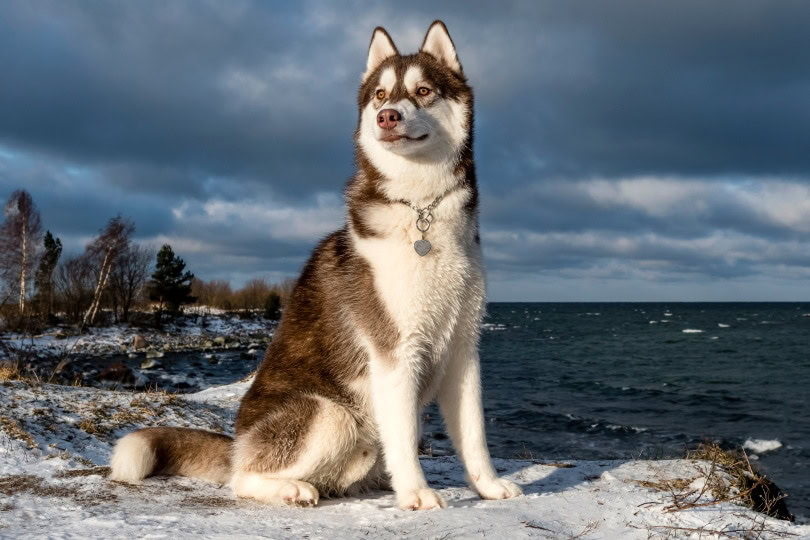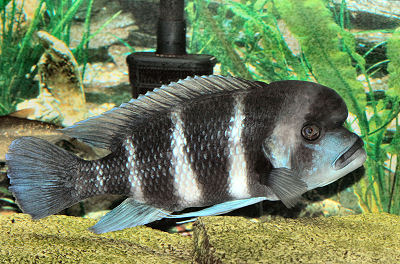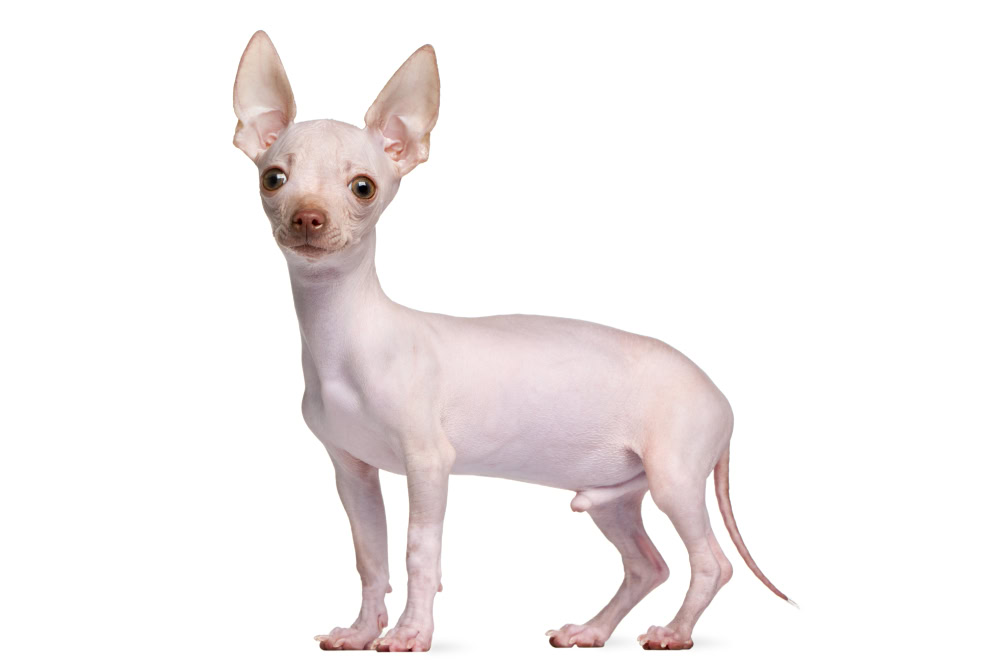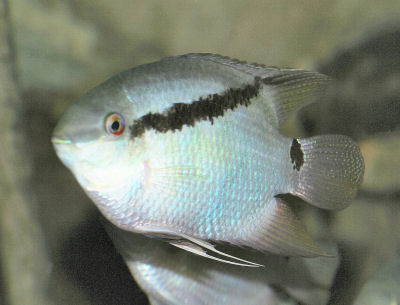Click Below to Skip Ahead
Originally bred to pull sleds as part of a pack, the Siberian Husky is a thick-coated Nordic breed that was developed in Siberia, Russia. This vast region of Russia is mostly tundra, forest, and mountains and experiences extremely cold temperatures, which makes the Husky suitable for pulling sleds in cold climates.
Breed Overview
Height
20–23.5 inches
Weight
35–60 pounds
Lifespan
12–14 years
Colors
Black and white, gray and white, red and white, sable and white, white, black, tan, and white, gray and black, black, brown, tan, black, gray, and white, copper and white
Suitable for
Active people, families, farmers
Temperament
High-energy, friendly, mischievous
In modern life, the Husky may be used for a professional or competitive sled dog team or as a beloved family pet. They are friendly, beautiful, and loyal, and many admire their wolf-like looks, striking eyes, and coloration. As pack dogs, Huskies are happy to be part of a family with other dogs, but they have a high prey drive and may chase small animals. Huskies are also workhorses, so they need an owner who can give them a lot of exercise and attention.
Siberian Husky Characteristics

Siberian Husky Puppies
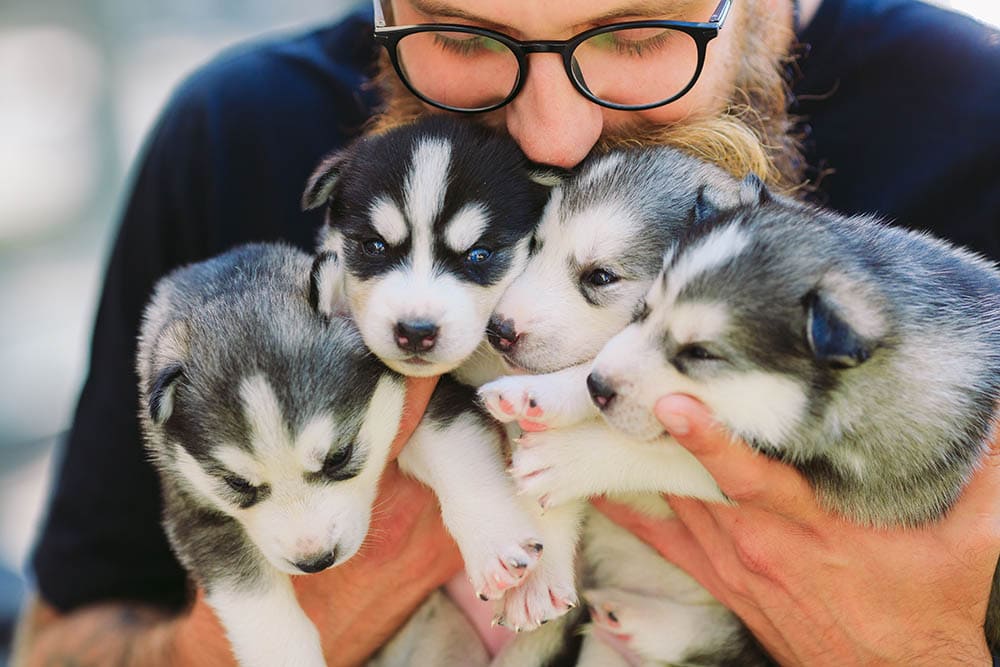
Siberian Husky puppies are playful and incredibly energetic. They are friendly with children and other dogs but may have a high prey drive and may not be suitable for homes with small animals. Socializing and training them properly from a young age is vital to ensure they become well-behaved and obedient dogs.
Because of their beauty and use in film and television, Huskies are at the top of many owners’ lists for a dream dog breed. Unfortunately, many select them for their looks and image rather than their personalities. Huskies are working dogs first and foremost, so they need plenty of training and discipline to be well-adjusted family pets.
Because of that, many Huskies end up in shelters. If possible, look for a Husky in a shelter or rescue before purchasing a puppy from a breeder.

Temperament & Intelligence of the Siberian Husky
Huskies are beautiful, but how do they get along with families, children, and pets? You’ll find the answer and more about their temperament and intelligence below.
Are These Dogs Good for Families?👪
Huskies love people and get attached to all family members, so they’re an excellent choice for families with children. They are large and can be rambunctious, so they must be taught manners to avoid accidentally injuring the children. In turn, children must also be taught to respect the dog’s space and avoid tugging on their tail or ears.
Huskies are vocal and have a signature howl that sounds similar to a wolf, but they’re not great watchdogs. If a stranger approaches or someone knocks at the door, your dog may not alert you.
Does This Breed Get Along With Other Pets?
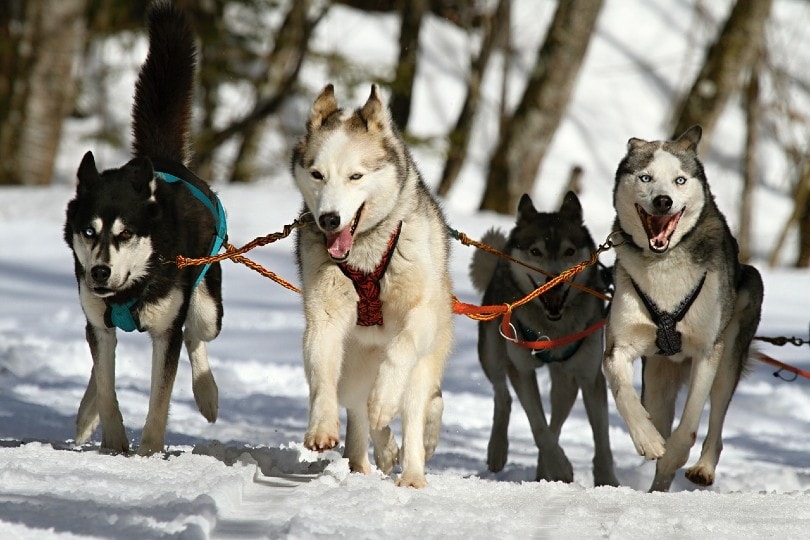
Huskies are pack dogs and learn to work as a team, so they tend to get along with other dogs. However, they have a high prey drive and often hunt and chase small animals. They’re unafraid of cats, so they have no qualms about chasing one around.
If you have small animals, it’s essential to socialize your Husky well. This is a hard habit to break, however, so it may be best to select another breed or commit to keeping your small animals safely tucked away in separate areas from the Husky.

Things to Know When Owning a Siberian Husky:
So, do you think a Husky is the right choice for you? Read more about the breed’s diet, exercise, training, and grooming needs.
Food & Diet Requirements 🦴
Huskies can go long periods without food, but they do best on a high-protein diet designed for their energy needs. Choose high-quality dog food with natural ingredients and animal protein as the first ingredients. You may want to get a breed-specific food that is suitable for the Husky’s life stage. You can also speak to your veterinarian for advice.
Exercise 🐕
Huskies were bred to pull a sled all day, and they haven’t lost that drive. Even as a family dog, a Husky will want to run and does best with a fenced-in yard and regular walks or playtime. Huskies are not reliable dogs off-leash and should never be left to roam.
Though Huskies prefer cold climates, they can adjust to living virtually anywhere. However, they can overheat quickly in hot weather, and it’s best to walk them in the early morning and evening in summer.
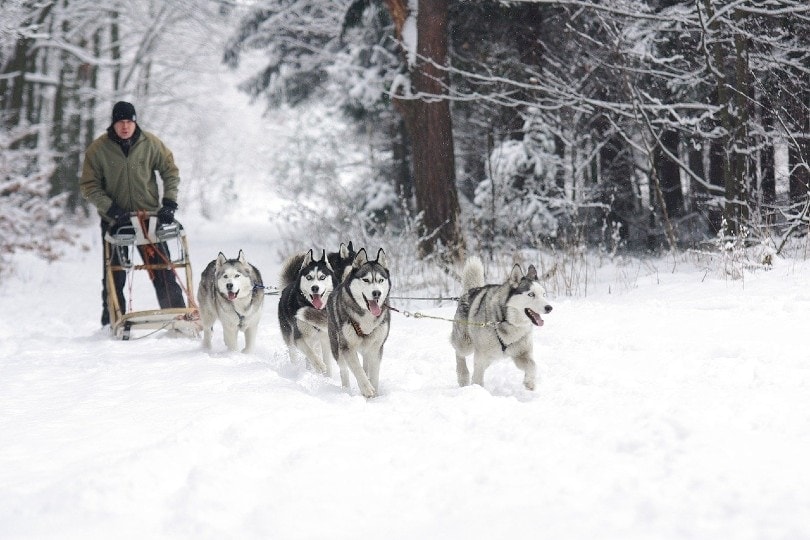
Training 🎾
Like all breeds, the Siberian Husky benefits from early obedience training, socialization, and discipline. For Huskies, they may need more since they’re a breed that’s accustomed to taking commands and working with a pack.
Huskies are born to run, so leash and recall training is vital to prevent escapes. If your dog takes off, they can run for hours and may not be able to find their way home. Huskies are also good at escaping, so ensure your fence is solid and buried partially under the ground to avoid digging. Huskies can climb chain links, so they’re best suited for yards with vinyl or wooden fencing. Invisible fences aren’t suitable for Huskies.
Training a Husky can take hours of dedication and patience, especially if you plan to use the dog for sledding. Huskies are social dogs and need attention and affection from their owners and other dogs, so they’re not suited to being home alone all day.
Grooming ✂️
Huskies have a thick double coat that must be brushed several times a week to remove loose hair. During the shedding season, they may need to be brushed daily. Huskies are naturally odor-free, but they benefit from regular bathing.
Siberian Huskies have strong nails that grow quickly, so you may need to trim your Husky’s nails biweekly. Some Huskies get an abnormal buildup of wax and debris, which can lead to infections. Be sure to clean your Husky’s ears once a week.
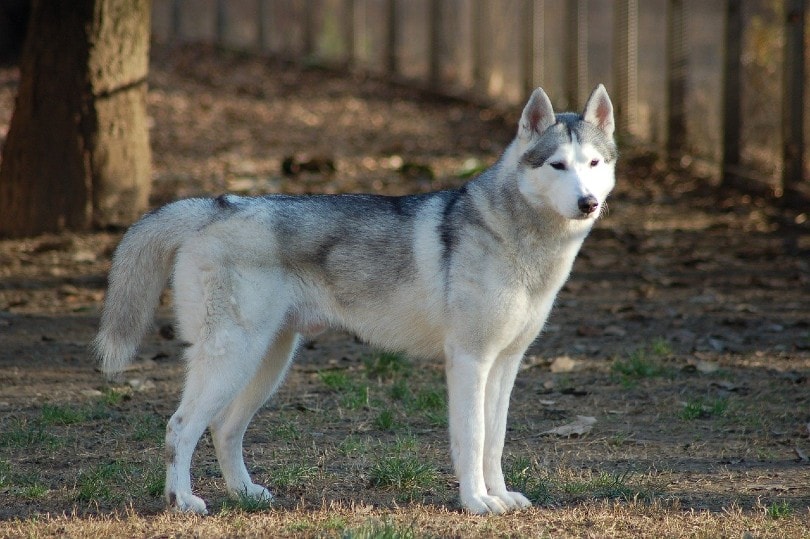
Health and Conditions 🏥
The Siberian Husky is a healthy dog, especially when raised by a responsible breeder. They are prone to genetic conditions like juvenile cataracts and hip dysplasia, however.
- Corneal dystrophy
- Progressive retinal atrophy
- Hip dysplasia
- Uveodermatologic syndrome
- Cataracts
- Follicular dysplasia

Male vs Female
There’s little difference between the temperament of a male and female Husky, especially once spayed or neutered. Fixing your dog prevents behavioral problems, such as marking, aggression, and increased vocalization, as well as medical conditions like reproductive infections and cancer.
Otherwise, the primary difference between males and females is size. Males are typically larger and heavier, but it can vary by individual.

 3 Little-Known Facts About the Siberian Husky
3 Little-Known Facts About the Siberian Husky
1. Huskies Are Built for Sub-Zero Climates
Siberian Huskies have a double coat with a short, thick undercoat to retain heat and a long, water-resistant outer coat. They also have long, bushy tails to cover their faces while they sleep, almond eyes to deflect snow, and “eyeliner” to keep the sunlight glare from compromising their vision, like a football player wearing eye black.
2. Blue Eyes Are Common in Huskies
While blue eyes are rare in most dog breeds, Huskies are often born with bright blue eyes. Heterochromia, when eyes are two different colors, is also common in the breed.
3. Huskies Have Incredible Metabolisms
Though science can’t explain it, Huskies have incredible metabolisms. They can sprint for hours without food, yet don’t tap into their fat or glycogen storage. They can regulate their metabolism for performance, which is likely from being bred to pull sleds over long distances with minimal food.
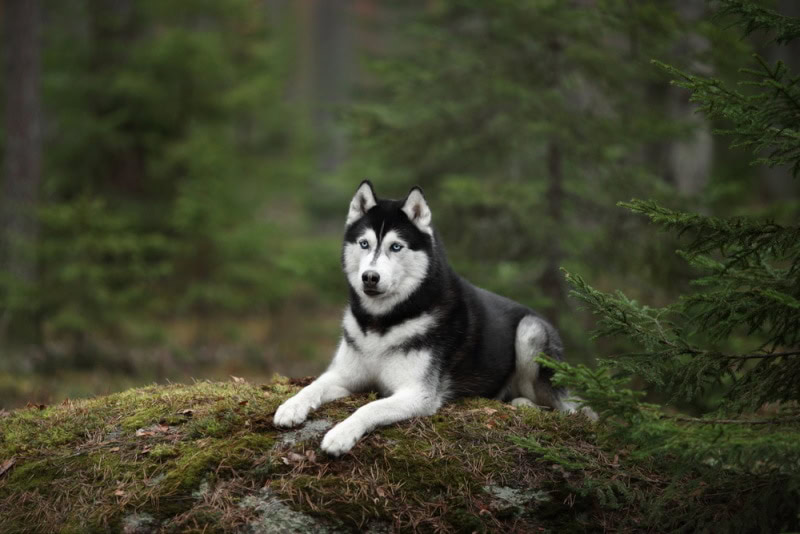

Conclusion
Often romanticized in stories like “White Fang” and “Game of Thrones,” the Siberian Husky is a beautiful, agile dog bred to pull a sled as part of a pack. With their wolf-like appearance, striking eyes and colors, and fluffy coats, Siberian Huskies are popular for many owners. These affectionate dogs are a beloved part of the family, but they have some behavioral quirks to consider before bringing one home.
Featured Image Credit: Aleksandr Abrosimov, Shutterstock
